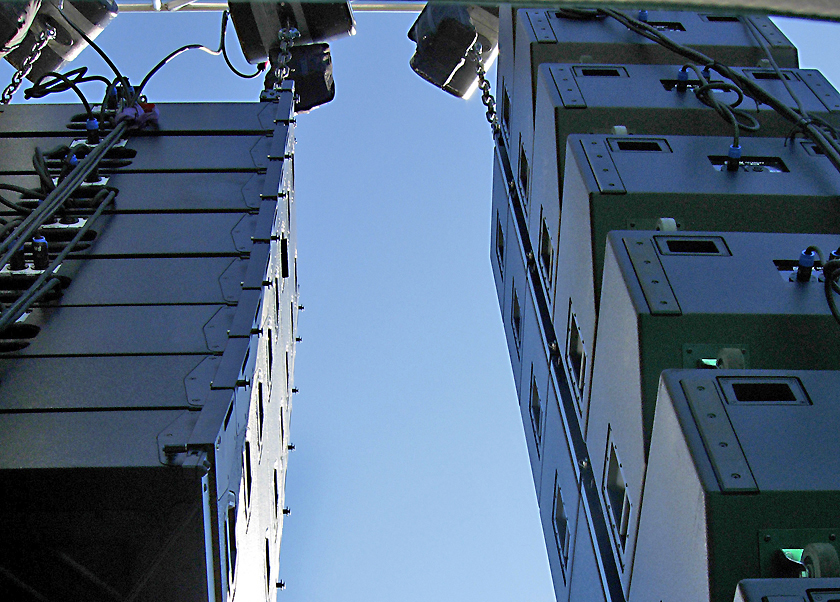
Using the tools at hand contained in the system processor, external EQs, or console matrix EQs, these two zones can be tailored to fit together with the smoothest amplitude and matching phase traces. Keep in mind that any small changes made to either mains or subs alone may cause small phase shifts, so keep Smaart on with the phase trace active throughout this process to see the effects of the adjustments that are being made.
Once satisfied with the controlled low-end level transition between lows and sub bass on one side of the main system, add the other side of the PA with the same settings. Again, this is a good time to look at the addition and coupling that will occur when more zones of low-end content are added.
It may be necessary to do some more tailoring in the levels of the main PA low-end (left and right), and the subs (left and right, or mono) until a satisfactory overall level of transition is reached. This method of avoiding low-end build up throughout the entire system, including side arrays, front fills and any other fill loudspeakers, will pay off big time when we start listening to our console inputs.
The methods described here will deliver a much more neutral-sounding system than many of the manufacturer systems provide, straight out of the box. I’ve been very happy with the results so far.
The Final Part
So how then do we get that big punchy sound we want? The last piece of the puzzle is about to be incorporated. When listening to – and mixing together – individual inputs, we will likely find the need to add back in low-end frequencies to instruments and probably reduce high-pass frequencies on vocals and some instruments.
The end goal is to get the console mix to sound completely full frequency from 20 Hz to 20 kHz in quality headphones or nearfield monitors, so it sounds great on recordings, press feeds and extra fill mixes. When we then bring it up in the PA that we’ve previously tailored in low frequency response and amplitude, it should translate much better. This method of system setup should accurately reproduce a great sounding board mix without the mix engineer needing to fight an excess of low-frequency tilt and buildup.
Using this new tuning approach here are some of the payoffs I’ve noticed thus far, particularly in the critical crossover region between the subs and low end of the mains:
- Better volume and tonal consistency on instruments that reside in this frequency zone. The bass guitar possibly is probably the biggest winner! The even amplitude and tone of notes on a bass guitar as the player moves up and down the neck is so much better.
- High to low toms definitely benefit from it, as well as full-frequency instruments like pianos.
- High-pass filter values are lowered considerably which contribute to a fuller sounding console mix, so excessive additional EQ is not required for record mixes to sound “mastered.”
- Sub bass frequency rumble and feedback on drums and open microphones is reduced. Exaggerated low-end boost on channels like kick drum and bass guitar are completely at the engineer’s discretion and not “built into” the entire PA’s frequency response.
Careful Out There
Now that we have a more neutral sound system canvas from which to paint an audio masterpiece, do it with style and color! Keep in mind that it’s a crazy world out there, and many sound systems are not tuned this way, especially in festival situations where the frequency response is decided by someone else (who possibly doesn’t agree with your fancy pants tuning style).
As a result, you may encounter very low-end-heavy PAs that your low-end heavy console mix has to work with, so be cautious if there’s a huge hump in the low-end response while playing the intro song. It may require throwing in some quick low-end cuts on the master bus or matrix EQs to play well in the sandbox with other systems.
Who knows? Maybe this new style of system frequency response will catch on and we’ll be remembered as trailblazers? Just maybe…
